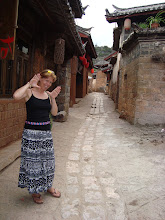
You have
noticed that everything
an Indian does is in a circle, and that
is because the Power of the World always
works in circles, and everything tries to be round. In
the old days when we were a strong and happy people, all
our power came to us from the sacred hoop of the nation, and
as long as the hoop was unbroken, the people flourished. The
flowering tree was the living center of the hoop, and the circle of the
four quarters nourished it. The east gave peace and light, the south
gave warmth, the west gave rain, and the north with its cold and mighty
wind gave strength and endurance. This knowledge came to us from the
outer world with our religion. Everything the Power of the World does is in
a circle. The sky is round, and I have heard that the earth is round like a ball,
and so are all the stars. The wind, in its greatest power, whirls, Birds make
their nests in circles, for theirs is the same religion as ours. The sun comes
forth and goes down again in a circle. The moon does the same, and both
are round. Even the seasons form a great circle in their changing , and
always come back again to where they were. The life of a man is a
circle from childhood to childhood, and so its is in everything
where power moves. Our teepees were round like the nests
of birds, and these were always set in a circle, the nation's
hoop, a nest of many nests, where the Great
Spirit meant for us to hatch our children.
-- Black Elk in Black Elk Speaks as
told through John G.
Niehardt
Black Elk (1863-1950) Oglala Sioux Holy Man

Awesome Jessica, thanks for posting that, and, with the enzo too!
ReplyDeleteAh! You know the ensō! It’s a symbol I love; however, I only just found out that ensō means circle in Japanese (for those who aren’t familiar, I’ve left a note below). Cú Chulainn’s hoops and ogham writing got me thinking about circles. I’m very glad to have come across Black Elk’s explanation of why circles are so powerful and happy to be able to share it.
ReplyDelete______________________________
Ensō
"The Ensō symbolizes enlightenment, strength, elegance, the Universe, and the void. In Zen Buddhist painting, ensō symbolizes a moment when the mind is free to simply let the body/spirit create. Some artists paint ensō with an opening in the circle, while others complete the circle. For the former, the opening may express various ideas, for example that the ensō is not separate, but is part of something greater, or that imperfection is an essential and inherent aspect of existence."
http://en.wikipedia.org/wiki/Ensō (aka bad, bad resource!!—but I can vouch for this one! ;D)
_________________________________
Ogham
"Although the knowledge of ogham was never lost to scholars (at least one 19th-cent. grave-marker uses it), the notion that ogham was employed for occult or magical purposes dogs critical commentary. As late as the 1930s the eminent archaeologist R. A. S. Macalister proposed that ogham was part of the secret language of ‘druidic freemasonry’. Seán O'Boyle suggested (1980) that the key to explaining ogham is harp notation. The god of rhetoric and eloquence, Ogma, is an attributed creator; his name and the word appear to be philologically related."
MacKillo, James. "ogham." A Dictionary of Celtic Mythology. 2004.Encyclopedia.com. 11 May. 2010
I know the enzo well; with Buddhists in the family, and a Japanese sister in law to boot, not to mention my own experience with kendo, I'd be ashamed if I had not heard of it! Black Elk was one smart fellow and I have to say, you know, he's got a point there about circles. Spancil hoops in the Ta/in... I had not thought about it, but you're right. Hmm, lots to think about--thanks!
ReplyDeleteThis comment has been removed by the author.
ReplyDeleteI don't recall any references to circles in The Mahabharata, do you? I just finished a book where the author circumambulated sacred Buddhist Mount Kailash, and of course there are mandalas...
ReplyDeleteWell, one could look at the cosmic forces behind much of the epic, especially karma, and see a certain circular pattern, the beginnings, the working out, and the end of a process (only to roll on into the next). There is also Krisna's weapon, the chakra, or wheel, and of course there is the basic plot wherein we see several things come full circle. I'll have to reread the sections we've left out; I haven't in a while and I am sure there must be something there (the Mahabharata has just about everything!). Great question.
ReplyDelete